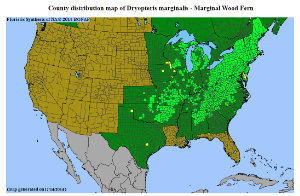English Ivy
English ivy (Hedera helix) is an easy-to-grow climbing vine and groundcover popularized by home gardeners for use in residential landscapes. However, this non-native invasive plant can escape from our yards and become a pest in forested settings where its weighty vines can damage and even kill trees. On the ground in natural areas, English ivy can crowd out important native plants by forming dense monocultures, eliminating habitat and food sources for wildlife. Learn to spot this invader, remove it when possible, and replace it with a desirable native alternerative.
- Credit: Forest and Kim Starr; “starr-090408-5651-Hedera_helix-in_understory-Piiholo-Maui”; CC BY 2.0
- English Ivy
- Credit: The Zhush
Identification
English ivy is a climbing, perennial vine that can also be a low-growing ground cover. It has alternate, dark green leaves with distinct white veins. The waxy leaves are usually three-lobed and have a heart- shaped base. English ivy’s long woody stems can climb trees and are supported by aerial roots.
English Ivy: Wicked Wanderer! – Credit: University of Maryland Extension Home and Garden Information Center
Common look-alike species include:
- Irish ivy (Hedera hibernica)
- Persian ivy (Hedera colchica)
- Boston ivy (Parthenocissus tricuspidata)
- Virginia creeper (Parthenocissus quinquefolia)
Additional information on how to identify English ivy can be found online.
Ecological Threat
Garden Invaders: English Ivy – Credit: Ontario Invasive Plant Council
English ivy occurs in many types of habitats including roadsides, fields, forest edges and woodlands. It also climbs up buildings and can damage façades. English ivy growing densely on the forest floor can exclude native plants. Climbing trees as high as 300 ft, it can also damage or kill weakened trees which become susceptible to wind or ice storms. Other invasive species can then invade forests with fallen trees where openings in the canopy exist.
Control and Removal
If English ivy is present on your property, is present on your property, consider removal and management options. The following resources provide valuable management information and tips.
How To ID and Remove English Ivy – Credit: Herndon Environmental Network
Other management tips can be found at:
Plant Native Alternatives
*This list is not comprehensive, but rather provides a sampling of species available for purchase from retailers located in Pennsylvania and/or surrounding states. All native plant distribution maps (below) are provided by the Biota of North America Program.
- Credit: Andrey Zharkikh, “2015.04.01_17.25.04_DSCN2212″, CC BY 2.0
Plantain-leaved Sedge (Carex plantaginea)
Plantain-leaved sedge requires a shady location to grow in along with moist, rich soils.
- Credit: Leonora (Ellie) Enking, “Dryopteris marginalis”, CC BY-SA 2.0
Marginal woodfern (Dryopteris marginalis)
Marginal woodfern is easily grown in average, medium, well-drained soil in part shade to full shade. It prefers moist, rich, humusy, acidic soils with protection from wind.
- Credit: peganum, “Heuchera villosa”, CC BY-SA 2.0
Alumroot (Heuchera villosa)
Alumroot is best grown in organically rich, humusy, medium moisture, well-drained soils in full sun to part shade.
Learn More and Take Action
Why are Native Plants Important?
Learn more about the importance of planting native plants by reviewing the following resources. And remember, planting even one native plant on your property is a tremendous benefit to wildlife and the environment!
Doug Tallamy Explains, “Why Native Plants?”
Credit: Catherine Zimmerman

Landscaping with Native Plants in Pennsylvania
Credit: PA Department of Conservation and Natural Resources
Professor Doug Tallamy on Sustainable Landscaping
Credit: University of Delaware
Discover Native Plants.
Learn what plants are native to your area by using the National Wildlife Federation’s Native Plant Finder or the Audubon’s Native Plants Database. Both programs are easy to use - just type in your zip code and a list of native plants is provided to you.
Record Invasive Species Findings with iMapInvasives.
If you find invasive plants and animals in natural areas such as parks, forests, and meadows, please report them to iMapInvasives, an online tool used by natural resource professionals and citizen scientists to record locations of invasive species The iMapInvasives program is useful in understanding species distributions statewide and is used by land managers to prioritize locations to conduct treatment efforts. In Pennsylvania, the iMapInvasives program is administered by the Western Pennsylvania Conservancy and the Pennsylvania Natural Heritage Program and is financially supported by the Great Lakes Restoration Initiative. At the national level, iMapInvasives is administered by NatureServe.
A free registered user account is needed in order to contribute and view data in iMapInvasives. Register here.
How to create a presence record in iMapInvasives online (video)
Connect with Our Experts
Please direct any questions or comments regarding this species profile to Amy Jewitt, Invasive Species Coordinator, or Mary Walsh, Aquatic Zoology Coordinator.














